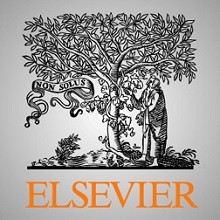
محیط نیروی کار و حق الزحمه های حسابرسی
Abstract
1- Introduction
2- Literature review and hypotheses development
3- Research methodology
4- Results
5- Additional robustness tests
6- Conclusion
Acknowledgements
Appendix A.
Appendix B.
References
Abstract
Using a dataset from 30 countries over the period from 2002 to 2017, we examine the effects of auditing clients’ workforce environment on audit fees as well as the role that national labor market flexibility plays in this relationship. We find evidence that audit fees are significantly lower for firms with a good workforce environment, suggesting that auditors perceive such clients as less risky; as a result, auditors expend less effort and/or charge a lower risk premium. Furthermore, we find this effect to be stronger for firms in countries with a more flexible labor market. Our mediation test results indicate that the relationship between the audit client workforce environment and audit fees is mediated by media coverage of workforce controversies. Our study contributes to the international audit fee literature by identifying employee welfare as a distinct audit pricing factor, above and beyond the effects of overall corporate social responsibility practices. IntroductionUsing a dataset from 30 countries over the period from 2002 to 2017, we examine the effects of auditing clients’ workforce environment on audit fees as well as the role that national labor market flexibility plays in this relationship. We find evidence that audit fees are significantly lower for firms with a good workforce environment, suggesting that auditors perceive such clients as less risky; as a result, auditors expend less effort and/or charge a lower risk premium. Furthermore, we find this effect to be stronger for firms in countries with a more flexible labor market. Our mediation test results indicate that the relationship between the audit client workforce environment and audit fees is mediated by media coverage of workforce controversies. Our study contributes to the international audit fee literature by identifying employee welfare as a distinct audit pricing factor, above and beyond the effects of overall corporate social responsibility practices.
Introduction
The auditor is one of the important stakeholders in a modern corporation (Ormazábal, 2018) and understanding how client characteristics affect auditors’ behavior is an important and popular area of research in the accounting literature. When making pricing decisions, auditors evaluate the costs of conducting an audit, the litigation risk inherent therein, and nonlitigation risk brought about by a client’s potential failure (Houston et al., 2005; Pratt and Stice, 1994; Simunic, 1980). Audit processes and audit efforts are adjusted to reduce any potential costs stemming from client-specific risks. For risks that are costly to reduce and that cannot be decreased by increasing audit efforts, auditors charge a compensatory premium. Therefore, any factors related to client-specific risks could influence auditors’ pricing decisions. As employees could be a source of sustained competitive advantage inasmuch as they facilitate a firm’s success in the market (e.g., Fulmer et al., 2003), employee- or workforce-related information could be of interest to auditors concerned about clients’ performance and risk. Auditors have previously voiced their interest in workforce environment. For example, Rebecca Dabbs, a partner of Ernst & Young, claims that firms can improve workplace productivity by ‘‘…better managing environment, health and safety risks.”۱ In this paper, we examine whether auditors price information related to a client’s workforce environment. We also investigate whether country-level labor market characteristics moderate this relationship.
Recent studies suggest that a family-friendly workforce environment could not only help firms attract and keep talented employees (Hom et al., 2017; Turban and Cable, 2003), but also motivate employees to be more cooperative and productive (Bloom et al., 2011; Fehr and Gächter, 2000). In addition, empirical studies show that relative to peers with a less favorable environment, firms with a favorable workforce environment have high performance and valuation levels, high levels of innovation performance, few internal control inefficiencies, and a low cost of debt capital, among other advantages (e.g., Chen et al., 2019, 2016a; Edmans, 2011; Guo et al., 2016; Lee and Kim, 2016). For instance, Guo et al. (2016) find that the probability of experiencing an employee-related material internal control weakness is relatively low when employees work in a workforce-friendly environment. In addition, Ji et al. (2018) find that auditors charge higher fees for firms that disclose material internal control weaknesses that are non-financial in nature. Therefore, the favorable workforce environment, a key ingredient of non-financial information, could be interpreted as a signal of both a low level of client internal control risk and highly credible client financial statements. Such positive signals would decrease audit fees accordingly.
